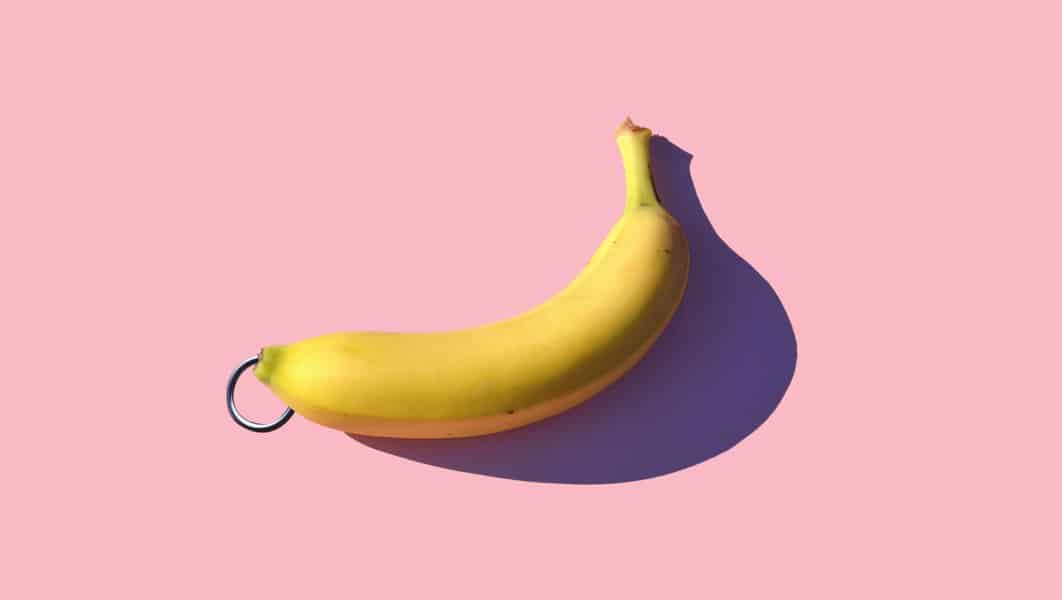Genital piercings involve the insertion of jewelry into various parts of the genital region, enhancing both aesthetics and sexual pleasure. These piercings can be done on male, female, or unisex genitalia, and each type carries its own set of characteristics and considerations.
From rites of passage to aesthetic expression, genital piercings are widespread throughout time and around the world. Genital piercings eschew conformity, offering a unique sense of self. Whether you show it off or keep it as your little secret, there is a genital piercing for you. Choosing which genital piercing is best varies from one person to another. To help you choose, we take a look at some of the most popular male and female genital piercings.
Popular Types of Male Genital Piercings
The most popular types of male genital piercings include:- Prince Albert/Reverse Prince Albert
- Frenum
- Apadravya & Ampallang
- Dydoe
- Scrotum
- Guiche
Prince Albert Piercing
The Prince Albert is probably the most well-known male genital piercing. The piercing goes through the glans along the shaft below the penis head, passes through the urethra, and comes out the head of the penis. A common variation is the reverse Prince Albert where the piercing goes through the urethra and comes out a hole pierced at the top of the glans. A captive bead ring is the traditional jewellery for the Prince Albert. Other jewellery types include a segment ring, Prince’s wand, circular barbell, curved barbell. It is usually pierced with a 12 or 10 gauge and stretched soon after. Depending on anatomy, the initial stretch ranges from 8g to 2g. People often oft to stretch further once this heals.Frenum Piercing
A frenum piercing is a genital piercing that pierces the skin on the underside of the shaft of the penis. It is similar to a frenulum, or web, piercing. The pierced area is the thin tissue between the head and the shaft. Having multiple piercings along the frenum is a frenum ladder or Jacob’s ladder. Both a standard and ladder frenum piercings will usually use either a curved barbell or captive bead ring for jewellery.Apadravya & Ampallang Piercings
The apadravya gets its name from a Kama Sutra term for an implement that enlarges the penis during sex. It is a male genital piercing that passes vertically through the penis head. An ampallang piercing is vertical. In addition to the penetration angle, another difference is the placement. An apadravya piercing goes through the urethra, whereas an ampallang can either pierce through or above the urethra. Both piercings use a straight barbell for jewellery. The barbell must be long enough to account for swelling and erection.Dydoe Piercing
A dydoe is a male genital piercing that pierces the ridge on the penis head. They can be done as singles, in pairs, or as a “crown” that encircles the head of the penis. The dydoe uses a curved barbell as jewellery. A solo dydoe is usually placed in the centre of the top side of the ridge, whereas pairs a placed to either side of the middle.Scrotum Piercing
A scrotum, or hafada, piercing is a surface piercing anywhere on the scrotum. The skin here is loose and flexible so the piercing is less prone to rejection or migration than other surface piercings. Scrotum piercing jewellery is usually a captive bead ring, curved barbell or a straight barbell.Guiche Piercing
A guiche piercing is not strictly a male genital piercing, but it’s less common among women. It’s a piercing on the perineum that typically runs horizontally. A series of guiche piercings is a guiche ladder. Guiche piercings can use captive bead rings, curved, circular or straight barbells, and flesh tunnels.Popular Types of Female Genital Piercings
The most popular types of female genital piercings include:- Clitoral Hood
- Labia
- Venus/Christina
Clitoral Hood Piercings
The clitoral hood piercing penetrates the “hood” of skin covering the clitoris. It does not pierce the clitoris itself. The low pain of this piercing coupled with it’s relatively short healing time make it very popular. The jewellery for these female genital piercings includes captive bead rings, labrets, j-bars, curved, circular, and straight barbells. They can be placed vertically or horizontally.Labia Piercings
Labia piercings can occur on the outer labia (labia majora) or the inner labia (labia minora). Inner labia piercings are generally preferred as they heal faster, are less exposed to aggravation and are less prone to migration or rejection than outer labia piercings. Most jewellery types are available for this female genital piercing. Captive bead rings are popular options, and even flesh tunnels can be worn.Venus (Christina) Piercing
The Venus piercing, or Christina piercing, is new in female genital piercings. It was only introduced in the 90s and got the name Christina after the first woman to get it. The Venus name comes from it being a piercing of the mon Venus, the area where the tops of the outer labia meet. To mitigate the risk of rejection a custom barbell or surface bar is usually best for this piercing.Our Favourite Piercing Aftercare

NeilMed Neilcleanse Piercing Aftercare
NeilMed Neilcleanse Piercing Aftercare saline spray helps in healing piercings. It is an isotonic, drug-free, preservative-free solution for cleaning your piercing during the healing period with no burning or stinging to irritate the pierced area. The sterile saline solution can be used as part of your healing process with any fresh piercing, including ear piercings, nostril piercings and belly button piercings. Neilcleanse sprays in any direction for easy use without touching your piercing.
Conclusion
Genital piercings are a unique and personal form of self-expression, allowing individuals to embrace their bodies and explore new sensations. By understanding the different types, their characteristics, and following proper aftercare guidelines, you can embark on a safe and satisfying journey of self-discovery. Remember to consult professionals like Chronic Ink Tattoo to ensure a positive piercing experience and to enjoy the long-lasting benefits of genital adornment.




